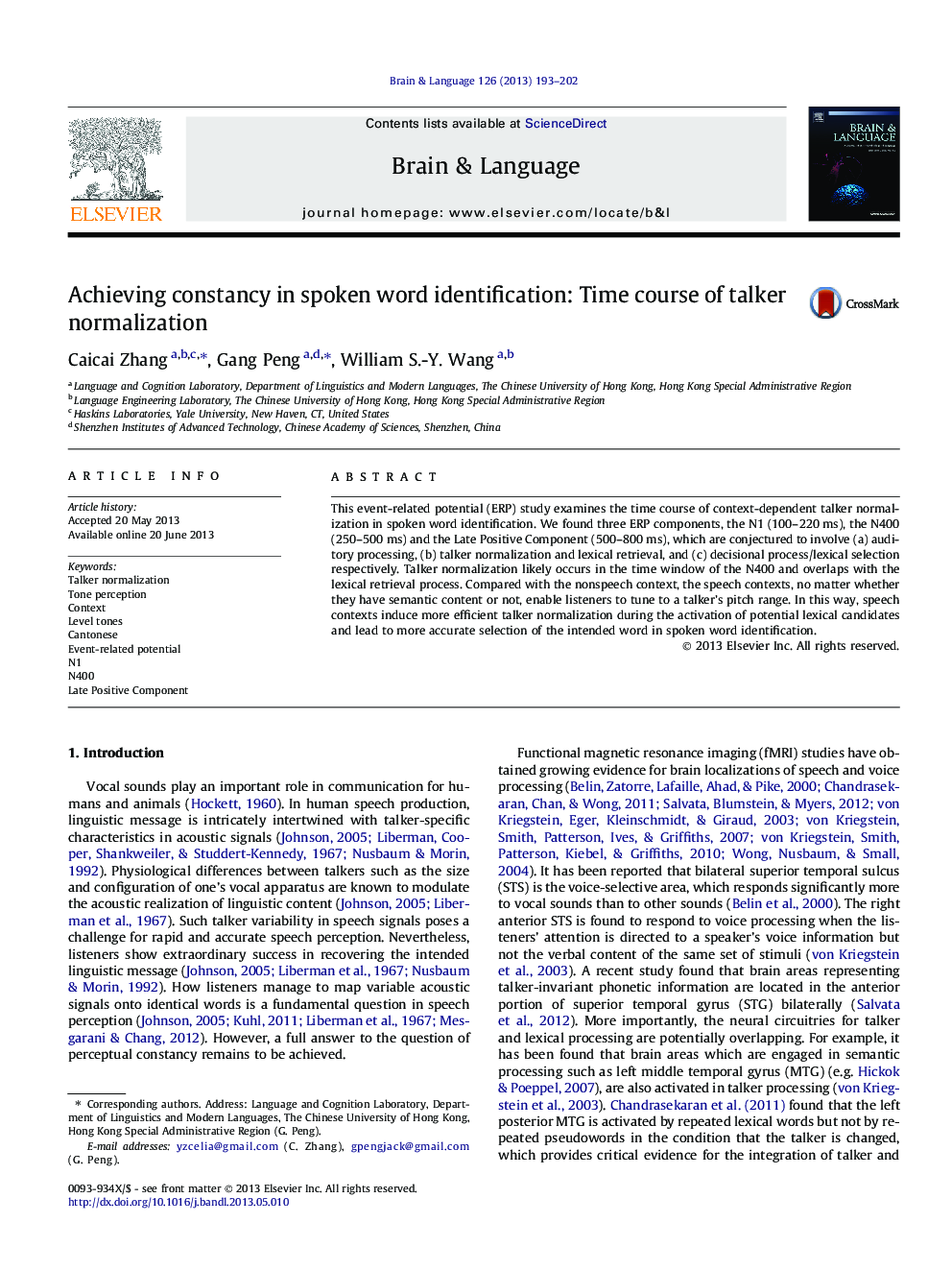| Article ID | Journal | Published Year | Pages | File Type |
|---|---|---|---|---|
| 10456423 | Brain and Language | 2013 | 10 Pages |
Abstract
This event-related potential (ERP) study examines the time course of context-dependent talker normalization in spoken word identification. We found three ERP components, the N1 (100-220Â ms), the N400 (250-500Â ms) and the Late Positive Component (500-800Â ms), which are conjectured to involve (a) auditory processing, (b) talker normalization and lexical retrieval, and (c) decisional process/lexical selection respectively. Talker normalization likely occurs in the time window of the N400 and overlaps with the lexical retrieval process. Compared with the nonspeech context, the speech contexts, no matter whether they have semantic content or not, enable listeners to tune to a talker's pitch range. In this way, speech contexts induce more efficient talker normalization during the activation of potential lexical candidates and lead to more accurate selection of the intended word in spoken word identification.
Related Topics
Life Sciences
Neuroscience
Biological Psychiatry
Authors
Caicai Zhang, Gang Peng, William S.-Y. Wang,
